The students in Brien Dick’s 6th grade class in Happy Hollow School in Indiana, US have been very scientific and thoughtful about the questions they asked. Thank you.
Question 1: How is the research from the Denmark Strait study going to help our everyday lives? Answer: Very good question. It would be wonderful if all scientific inquiry and discovery improved human life. And of course the purpose of some kinds of science, most obviously medical research, is to do just that. But other kinds—let’s call them Earth sciences or natural science—are all about understanding how nature works. This is the difference between “pure” and “applied” science. The oceanographer’s job is to understand how the ocean works. That said, however, there is the matter of climate change. The currents in this part of the world are crucially important for the stability of our climate because they combine to transfer cold water southward, thereby balancing the transfer of warm water that has been transported northward in the Gulf Steam. But this is a delicate balance that must be sustained. How will the warming world effect on this balance? As the Greenland Ice Sheet changes—melts—it will pour increased quantities of fresh water into the Nordic Seas. No one is saying that the Ice Sheet will melt entirely, but some quantity of melting is definitely taking place. We can’t predict what will happen in the near- and far term unless we understand what is happening now. Since climate change is a serious issue, especially for the younger generations, this research could have a direct effect on our lives. Answered by Dallas Murphy, Writer, Outreach Team
Question 2: You mention that salinity and the depth of the water affects your data. How and why? Could you explain this more fully? Answer: In order to investigate where the North Icelandic Jet (NIJ) originates, we take measurements of the temperature, salinity and velocity (speed and direction) of the water with our instruments, the ADCP’s and CTD’s. This is the data we use. The end product of these measurements is profiles of these measurements through the water-column from the surface to the bottom. From earlier surveys of these waters, we know approximately what to expect from the NIJ. For example, we know that it tends to follow the 600m (1/3 mile) depth contour as it flows in the direction of the Denmark Strait. We also know that the flow is strongest near the middle of the water-column. We know the ranges of temperature and salinity of the water in the NIJ, it’s fingerprint. Putting all of this information together, we are able to track the NIJ, using our instruments, back from the Denmark Strait along the continental slope of Iceland. To see what these profile printouts look like, see the Netherlands Schools’ question four and Ms. Rathert’s Happy Hollow question number three. Answered by Kjetil Vage, Physical Scientist Small and large ADCPs are secured in the Knorr’s main lab until they are used on moorings during the cruise. They will measure the velocity (speed and direction) of the currents passing the mooring for the next year. © Pat Keoughan
Our hard working CTD watchstanders are ready to assist with bringing this CTD, just emerging from the Iceland Sea, safely back on board. © Pat Keoughan Question 3: Does the temperature of the water affect the power of the current? Answer: Yes, the temperature of the water does impact its flow speed. The reason for this is that the temperature in part determines the density of the water, and a water parcel will begin to flow if its density is different than that of the surrounding water. In our case we are studying dense water and how it enters Denmark Strait, so it is crucially important that we measure the temperature accurately. By the way, the saltiness of the water is also an important factor in this regard (and salinity is more difficult to measure accurately). Answered by Bob Pickart, Chief Scientist
While Physical Scientist Laura de Steur was out in the Zodiac collecting water samples from the cold East Greenland Current, the rest of us collected photos and memories of these icebergs. © Pat Keoughan Question 4: Even though you have planned everything out before your trip, were there unexpected situations that caused problems? How did your team adjust to this? How will this affect your research? Answer: Great question. I usually start planning for a cruise well over a year in advance. This is because some of the preparation is very time consuming. For instance, on this cruise we needed to apply for permission to enter the territorial waters of Denmark (which includes Greenland and the Faroe Islands), Iceland, and Norway (which includes Jan Mayan Island). This is a long process which involves the US Department of State. (As an interesting side note, we did not get our Norwegian clearance until four days before the cruise.) However, despite my best attempts to prepare, unexpected things occur during every cruise. For example, on this cruise the primary instrument that we use (called the CTD, see the nice video on our website) leaked and stopped working. When we went to use the backup CTD we discovered, much to our dismay, that it too was broken. So we had to react quickly and try to fix one of them (which we did), but I also arranged to have two more backup instruments flown to Iceland. So we diverted our cruisetrack and went to Akureyri, Iceland to pick them up. This took valuable time away from the science operations. Also on this cruise we have changed our plans in reaction to the data that we've collected. About half-way through the cruise we started seeing an unexpected current, and we've altered our sampling plan to try and learn more about it. Sometimes the unexpected surprises turn out be the most exciting results! It also gives us motivation for developing new experiments to understand these surprises. One of the things that I love about oceanography is that is is a very "young" field---that is, there is so much we don't yet understand. It is quite thrilling to discover a new current or a new type of process happening in the ocean. Answered by Bob Pickart, Chief Scientist
Question 5: How in the world was the Knorr cut in half? Answer: I asked the first crew member I saw, after reading this question, who would be the best person to ask about when the Knorr was cut in half? She immediately answered, Pete (the Chief Engineer). Pete and I sat down and talked about what he knows of the Knorr’s restructuring in 1989. He said the whole project took years of planning by Naval architects, from the design of the new section, which had to fit perfectly, to how this project was going to actually happen. The lengthening and updating of the Knorr took two years to complete; it was out of the water from 1989 to late 1991. The first step was to take the Knorr out of the water lifted by a VERY STRONG crane. Eight steel lift points were welded to her sides to attach the crane’s wires. She was set down on blocks in the McDermott Shipyard in Amelia, Louisiana, US. Next, she was gutted. Everything was taken out except the hull, frame, decks, stanchions (like steel pillars) and deck houses. (I picture an old house that everything has been moved out of before it is demolished.) Once the Knorr was an empty shell, workers using oxyacetylene torches, cut the Knorr in half. Pete believes there were probably many people working on this in shifts. I’m sure it took quite a while. The next job was to lift both halves of the ship and move them apart. They had to make room for the middle section that was assembled somewhere else. That had to be lifted and lowered into the space between Knorr’s two halves. The last step to the restructuring was to weld the three sections together to create one, longer ship. Of course she had to be refurnished, updated and painted before she could sail back to WHOI in Woods Hole, to return to research cruises. Pete very kindly gave me some old photos of the restructuring of the Knorr to share with you. Answered by Pat Keoughan with information and photos provided by Pete Marczak, Knorr’s Chief Engineer
The smaller Knorr is eased onto blocks by a complicated crane. You can see where the crane’s wires are attached to the lift points on the Knorr. (Credit: Wayne Sylvia)
You can see the two halves of the Knorr, gutted and separated, awaiting the arrival of the new section. (Credit: Wayne Sylvia)
Last updated: December 27, 2011 | |||||||||||
Copyright ©2007 Woods Hole Oceanographic Institution, All Rights Reserved, Privacy Policy. | |||||||||||


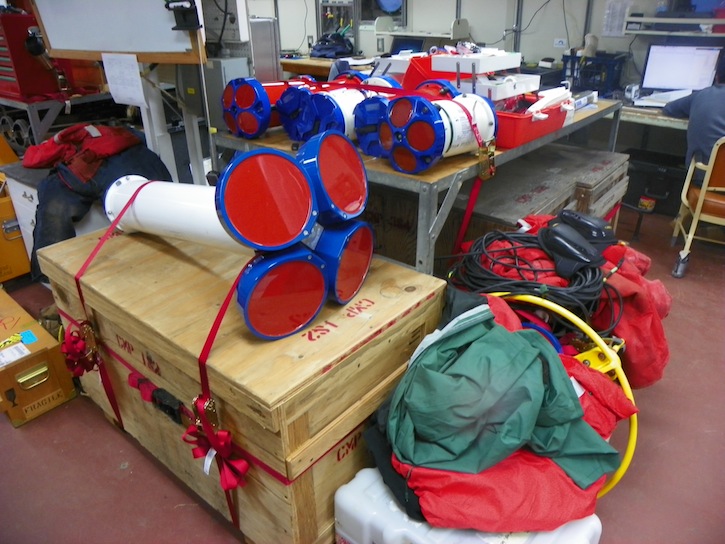
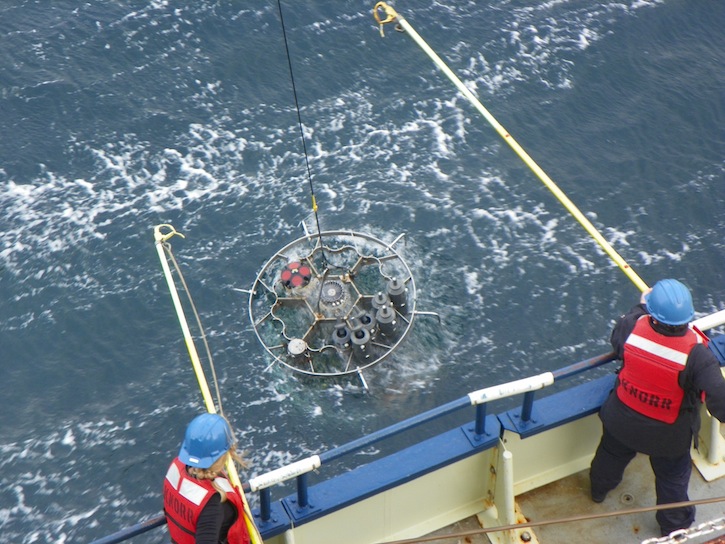
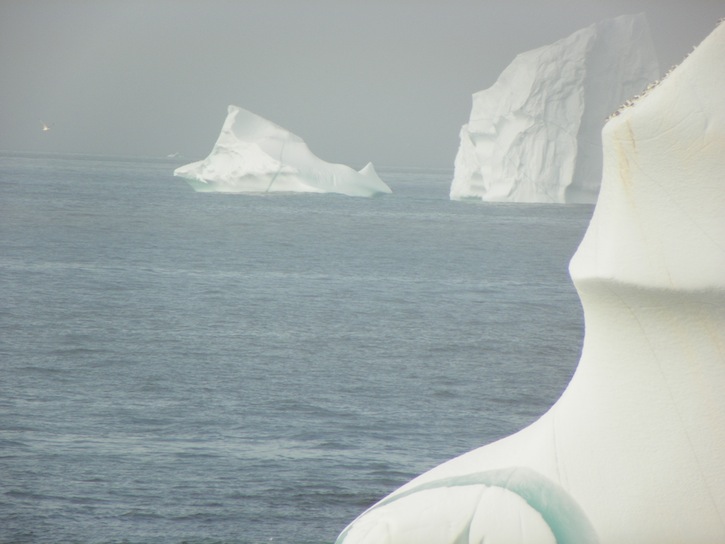
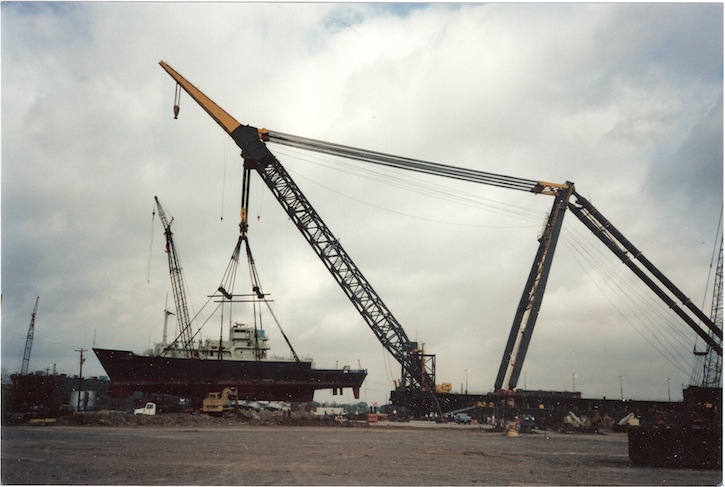
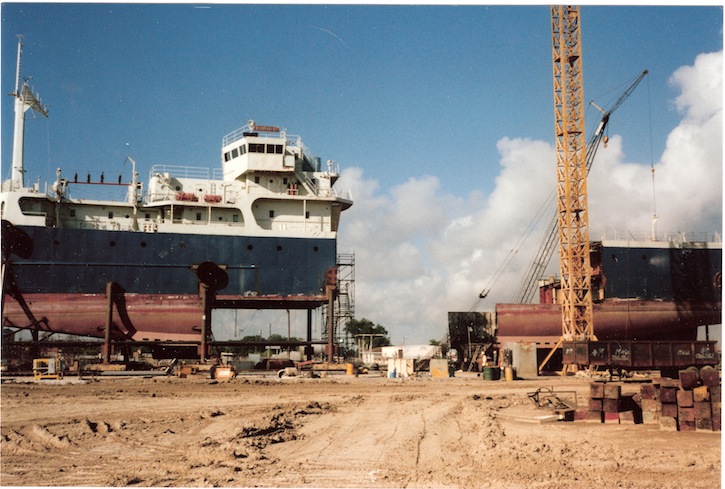
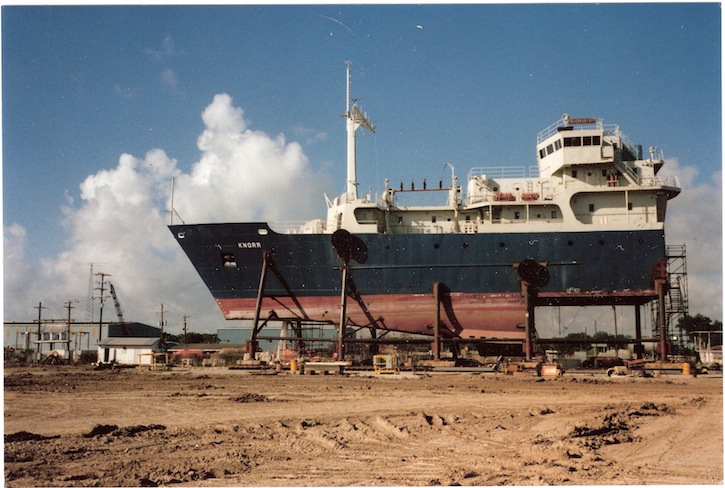 QS8_05c.JPG The bow half of the Knorr, looking very odd, sits on blocks at the McDermott Shipyard in Amelia, Louisiana, US. (Credit: Wayne Sylvia)
QS8_05c.JPG The bow half of the Knorr, looking very odd, sits on blocks at the McDermott Shipyard in Amelia, Louisiana, US. (Credit: Wayne Sylvia)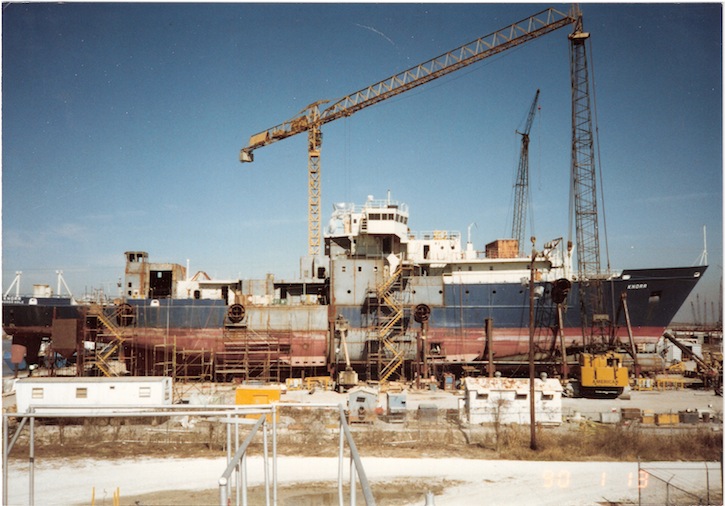 QS8_05d.JPG The Knorr’s new section has been welded to the original bow and stern. What’s blue and red is the “old” Knorr, what’s gray is the new section. (Credit: Wayne Sylvia)
QS8_05d.JPG The Knorr’s new section has been welded to the original bow and stern. What’s blue and red is the “old” Knorr, what’s gray is the new section. (Credit: Wayne Sylvia)